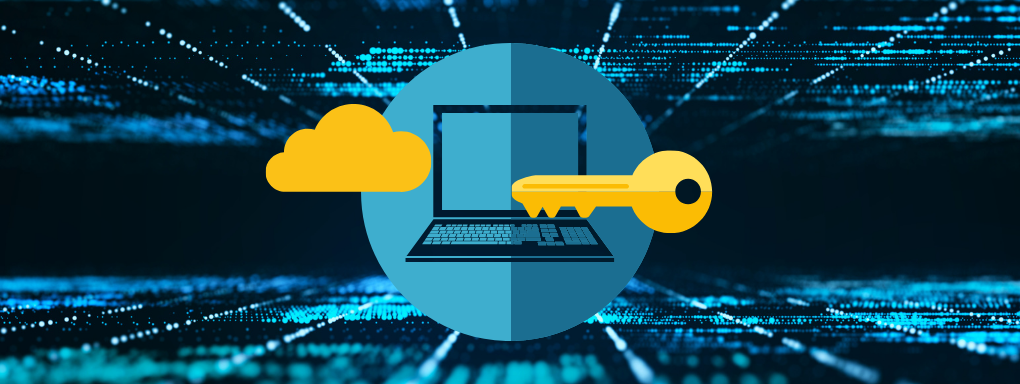Get a FREE personalised SASE assessment from Netskope!
As businesses become more aware of threats to their critical information, they turn to DLP solutions to implement the data protection they need to protect their corporate networks. But what is DLP, and how does it help organisations protect critical data, such as intellectual property, personally identifiable information covered by various regulations, and sensitive financial data?
Data loss prevention (DLP) is a model that seeks to improve information security and protect sensitive information from data breaches. It prevents end-users from moving critical information outside the network. DLP also refers to tools that enable a network administrator to monitor data accessed and shared by end-users.
DLP solutions encompass a set of tools and processes that help protect sensitive data from loss, misuse or unauthorised access. DLP enforces remediation with alerts, encryption, and other protective actions.
DLP also refers to software products that help information security teams and administrators control what data end users can transfer. So, DLP products use business rules to classify and protect confidential and critical information, preventing data sharing by unauthorised parties, putting the organisation at risk. IT teams can also use some DLP tools to filter data streams on the corporate network and protect data in motion.
DLP technologies get broadly categorised as:
- Enterprise DLP: These DLP solutions are comprehensive and presented in the form of agent software for desktops and servers, physical and virtual appliances for monitoring networks and email traffic, or soft appliances for data discovery
- Integrated DLP: This type of DLP is limited to secure web gateways (SWGs), secure email gateways (SEGs), email encryption products, enterprise content management (ECM) platforms, data classification tools, data discovery tools and cloud access security brokers (CASBs)
- DLP solutions rely on differentiating between content awareness and contextual analysis
When you think of DLP, you have to believe in the context of understanding the differences between content awareness and contextual analysis. Content awareness involves capturing the package and peering inside it to analyse the content. Context includes external factors such as header, size, format, etc. The idea behind content awareness is that although we want to use the context to gain more intelligence on the content, we don’t want the restriction to a single context.
Data protection is one of the main concerns for organisations that adopt cloud services. The average enterprise uses 1,427 cloud services, and employees often introduce new services on their own. Analysing cloud usage data for 30 million users, McAfee found that close to 18.1% of documents uploaded to file-sharing services contain sensitive information. Data could be personally identifiable information (PII), protected health information (PHI), payment card data, or intellectual property, and all of these create compliance concerns. These concerns only highlight the importance of employing the right DLP solution in the cloud. A full-suit DLP tool would encompass accuracy, real-time monitoring, data analysis in motion, incident remediation, and data loss policy authoring for successful cloud adoption.
BONUS DOWNLOAD: 10 Critical Security Projects and How Netskope Can Help
Why You Need DLP
The digital transformation journey of companies today requires an active approach towards detecting data loss and working to prevent the illicit transfer of data outside the organisation. Enterprises must also keep an eye out for the unwanted destruction of sensitive or personally identifiable data (PII). This is where DLP comes in handy. It can address all of these issues as well be used to help organisations with data security and ensure they comply with regulations like the California Consumer Privacy Act (CCPA), EU General Data Protection Regulation (GDPR), and Health Insurance Portability and Accountability Act (HIPAA). The terms "data loss" and "data leakage prevention" can be used interchangeably, but DLP security is a powerful tool to help organisations defend themselves against both. DLP allows businesses to:
- Identify sensitive information across multiple on-premises and cloud-based systems.
- Prevent the accidental sharing of data
- Monitor and protect data
- Educate users on how to stay compliant
A good DLP tool is vital for businesses dealing with huge data volumes. We see cybercriminals deploy increasingly sophisticated attack methods. It is, therefore, crucial to ensure that business-critical, sensitive data is secure at all times, no matter the location.
Many DLP tools offer a well-rounded security product that provides DLP and next-generation firewalls (NGFW), SD-WAN, and other information security components. It equips businesses with everything they need to keep their data and users secure and prevent costly data loss incidents.
Ultimately, DLP software is one of the best ways to help prevent data leaks and data loss. Deploying DLP is part of an approach that seeks to build a layered defence strategy. Businesses need to focus on reducing their attack surface, actively look for suspicious activity and insider threats that could lead to data breaches, and plan an effective response strategy.
Your goal should be on protecting your critical data against attacks and accidents. For this purpose, you need a layered strategy for data loss prevention. No single enterprise DLP tool can solve all your data security problems; DLP is in itself a comprehensive process. To get started, explore all the capabilities of the tools you already have against your company’s business needs. You might be surprised to discover how much data protection they can provide, enabling you to save your budget for crucial foundational technologies like data discovery and classification.
With the spread of mobile device adoption, there has also been a significant increase in stolen or lost devices. These incidents eventually highlight the colossal loss of sensitive data for enterprises and users. So, businesses must secure the enterprise data available on the mobile devices of their employees as well. DLP is about securing devices – whatever they may be – in such a way that data stored on them is secured even if it gets into the hands of the wrong person.
Want to find out more about implementing DLP practice across your organisation? Check out gend.co/proveit.



